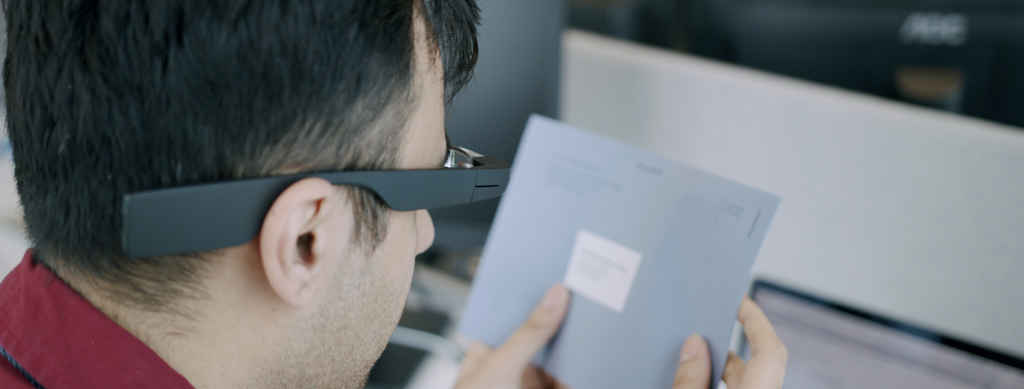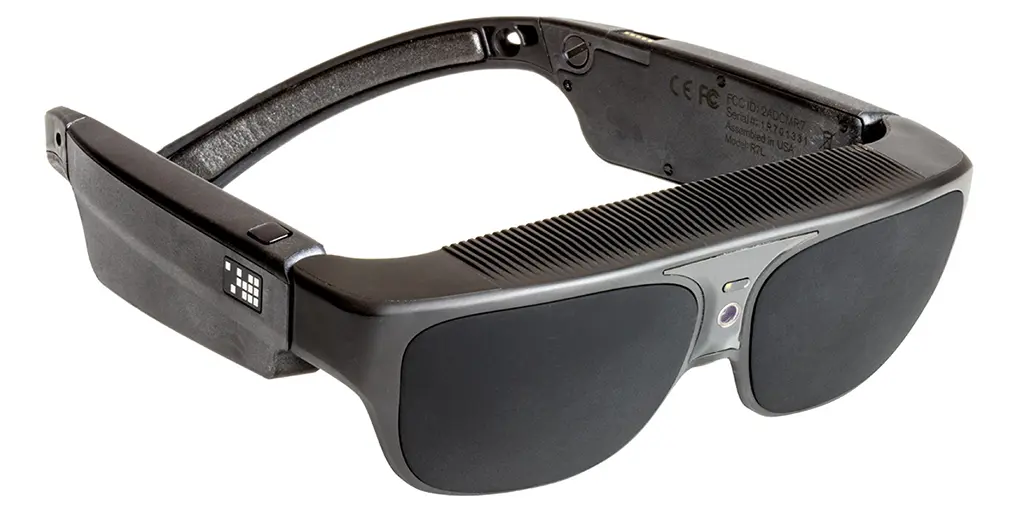Ingenious Solutions in Assistive Modern Technology for Visual Disability
The landscape of assistive innovation for visual disability is evolving rapidly, offering a series of cutting-edge services that enhance accessibility and freedom. From sophisticated smart device applications that promote navigating to wearable tools created for real-time support, these devices are reshaping the experiences of those with aesthetic disabilities. In addition, the assimilation of smart home innovations and educational sources has the potential to cultivate higher area interaction. However, the ramifications of these improvements raise essential concerns concerning their availability and effectiveness in varied contexts, calling for a closer examination of their more comprehensive influence.
Advancements in Smartphone Applications
In the last few years, improvements in mobile phone applications have considerably changed the landscape of assistive innovation for people with visual impairments. These applications utilize the powerful sensors and capabilities of modern-day smartphones to give individuals with devices that enhance self-reliance and availability in their day-to-days live.
Significant among these developments are applications created for things recognition, which make use of the mobile phone's camera to identify products and give spoken descriptions. Such features encourage users to navigate their atmospheres better, whether identifying items in shops or locating personal belongings in the house. Additionally, text-to-speech applications have improved considerably, enabling individuals to record published text with their gadget's video camera and obtain split second audio responses, thus promoting reading and understanding.
Community-driven applications have actually fostered social interaction and resource sharing amongst individuals with visual disabilities, developing a supportive network that boosts their quality of life. In general, smartphone applications have actually ended up being crucial allies in advertising autonomy and availability for people with visual disabilities.
Wearable Devices for Navigation
Wearable tools for navigation have actually emerged as a groundbreaking option for individuals with aesthetic impairments, using hands-free assistance that boosts wheelchair and positioning. These devices commonly make use of sophisticated modern technologies, including GPS, ultrasonic sensors, and expert system, to offer real-time responses and instructions to users as they browse their atmosphere.
One remarkable instance of wearable navigation innovation is wise glasses, which can find challenges and relay auditory or haptic comments to the user, allowing for efficient and risk-free activity in various settings. Various other tools, such as vests and belts geared up with sensing units, can likewise inform individuals of their surroundings by giving alerts concerning close-by things or changes in terrain.
In addition, several wearable tools integrate with smart device applications, enabling users to personalize their navigation choices and get customized course tips. This customization can considerably improve the individual experience, equipping individuals to take a trip with greater confidence and self-reliance.
As technology remains to establish, the possibility for wearable navigation gadgets to boost the high quality of life for individuals with visual problems continues to be significant, leading the means for even more comprehensive and easily accessible settings.
Smart Home Technology Assimilation

Furthermore, smart appliances equipped with responsive interfaces or auditory comments supply intuitive interactions that provide particularly to the needs of those with aesthetic problems. Smart fridges can introduce their materials and expiry dates, while wise ovens can direct users via the food preparation procedure with audio instructions.
Home automation systems, such as wise doorbells and safety and security cameras, offer peace of mind by enabling individuals to obtain informs and gain access to live feeds via their mobile gadgets, boosting individual security (AI-powered visual aids). In addition, integration with tablets and mobile phones makes sure that users can handle their home setting from anywhere within their properties
As clever home technology continues to develop, it holds the possible to transform the living experiences of individuals with visual impairments, promoting independence and enhancing lifestyle in a significantly connected world.

Educational Tools and Resources
Access to efficient instructional devices and resources is crucial for individuals with visual problems, as it equips them to engage completely in their knowing experiences. Various assistive modern technologies have actually been developed to improve ease of access and foster independent understanding.
In addition, instructional software especially made for aesthetically impaired customers provides features such as high-contrast settings and adjustable message sizes. These devices accommodate varied understanding styles and ensure that pupils can customize their instructional experience to their needs.
Moreover, access to electronic libraries and audio publications expands the range of readily available understanding materials, allowing trainees to explore subjects in depth without the restrictions enforced by traditional print sources. Collaborative systems that include access features also assist in team jobs, making sure that aesthetically impaired trainees can contribute meaningfully alongside their peers.
Neighborhood Assistance and Involvement
A robust network of community assistance and interaction is necessary for individuals with visual problems, promoting a comprehensive setting where they can prosper. Community companies, local campaigning for groups, and volunteers play a critical role in offering resources, info, and friendship, which are essential for boosting the top quality of life for those influenced by aesthetic problems.
Engagement activities such as workshops, social events, and assistance groups not just promote ability growth yet also promote social communication, lowering sensations of seclusion. These initiatives motivate individuals to share obstacles, experiences, and successes, consequently enhancing community bonds. Furthermore, partnerships with regional companies can bring about greater access in public rooms, additionally incorporating individuals with aesthetic problems right into the area.
Modern technology additionally boosts neighborhood interaction via online systems that provide online support system and sources, permitting people to reference link despite geographical barriers. By taking advantage of both in-person and digital options, communities can develop a detailed support network. Eventually, fostering partnership among numerous stakeholders-- consisting of family members, educators, and medical care specialists-- guarantees that Discover More people with aesthetic disabilities get the holistic support needed to browse every day life successfully and with dignity.
Conclusion
Cutting-edge options in assistive technology for visual problems considerably boost the lifestyle for people dealing with these difficulties. The combination of smartphone applications, wearable gadgets, clever home innovation, and academic devices cultivates greater self-reliance and availability. Community support and involvement further empower aesthetically damaged individuals, advertising inclusivity and participation in various elements of life. Collectively, these improvements not only change daily experiences but likewise lead the way for an extra equitable society.
The landscape of assistive innovation for visual impairment is progressing rapidly, offering an array of cutting-edge remedies that enhance availability and freedom. Community-driven applications have actually promoted social interaction and source sharing among individuals with visual impairments, producing an encouraging network that enhances their high quality of life. Overall, smartphone applications have actually become vital allies in promoting freedom and ease of access for individuals with aesthetic impairments.
Several people with aesthetic disabilities are discovering better autonomy via the assimilation of clever home innovation.Cutting-edge remedies in assistive technology for aesthetic disability dramatically enhance the quality of life for individuals encountering these obstacles.